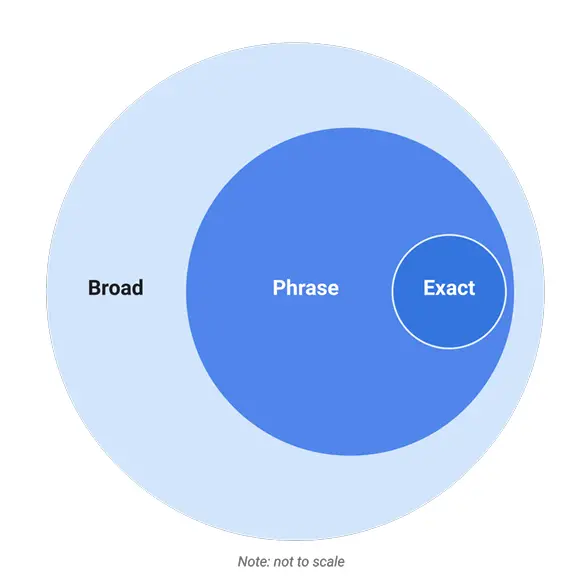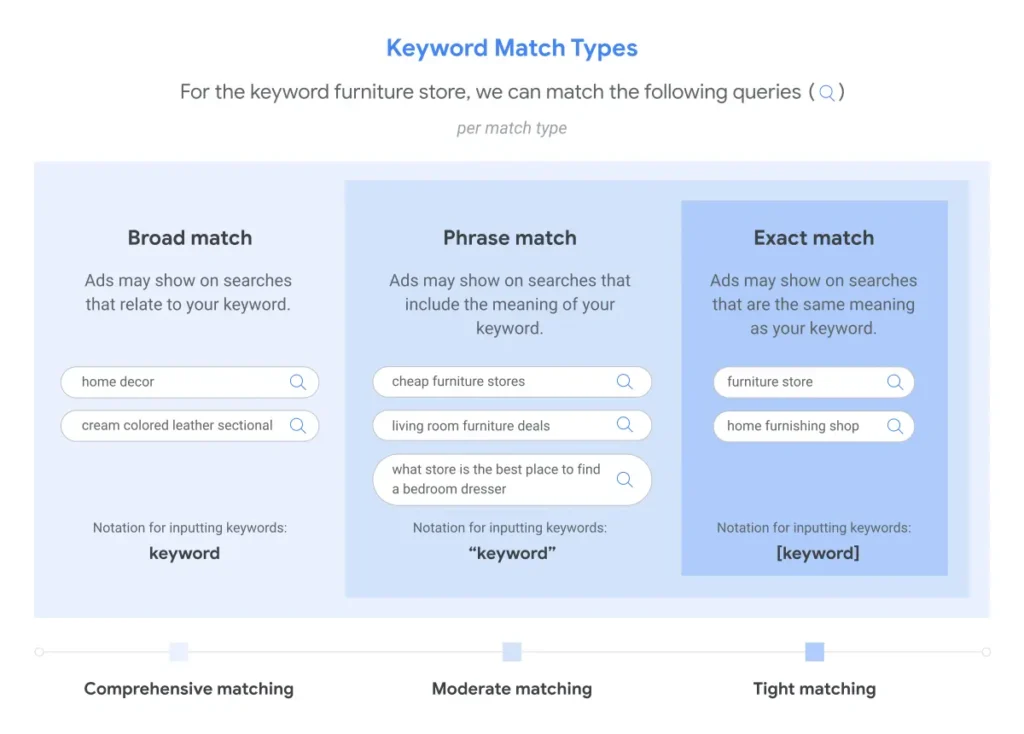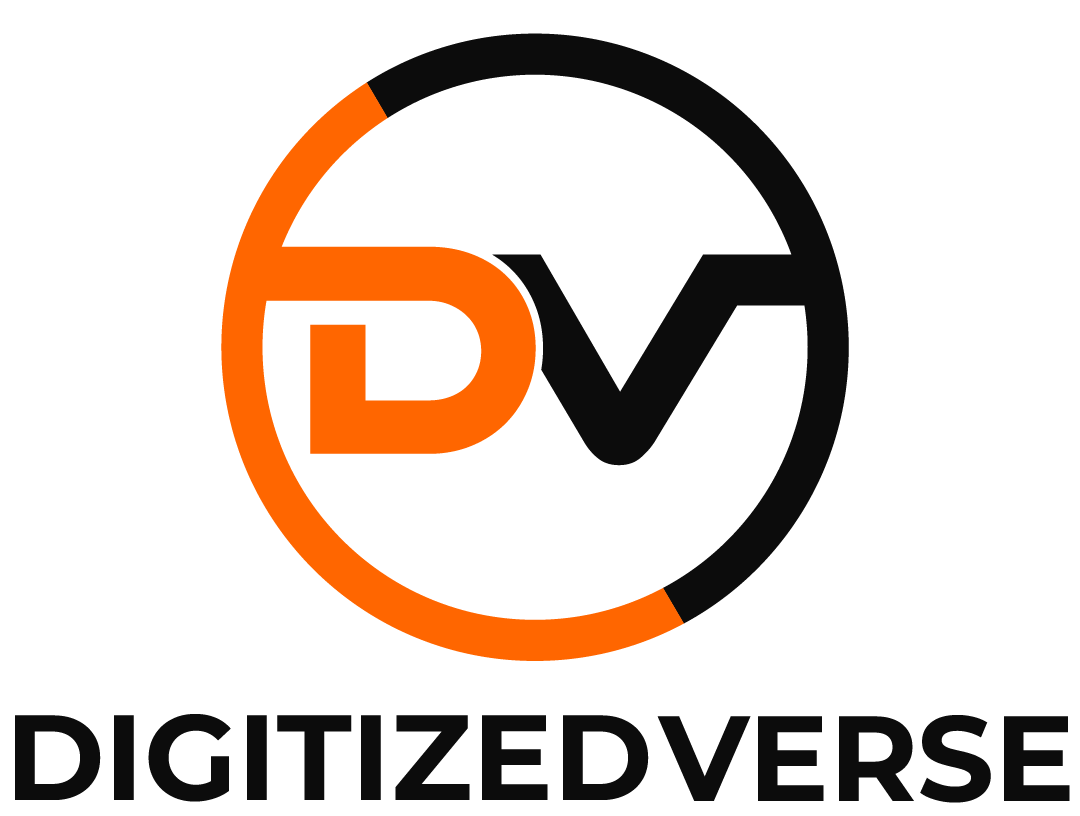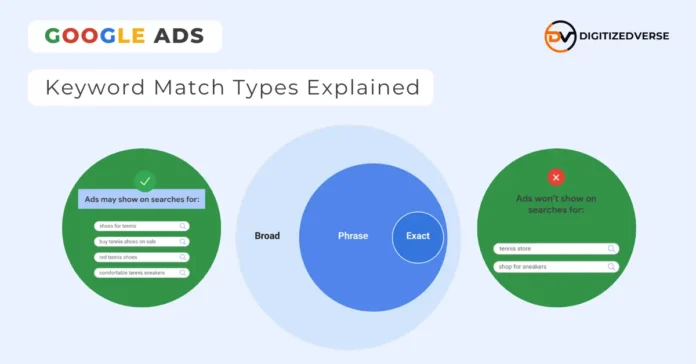Google Ads continues to be one of the most powerful platforms for driving targeted traffic, generating leads, and scaling revenue. But success doesn’t only depend on bidding and budgets—it starts with choosing the right keywords and, more importantly, the right keyword match types.
If you’re still relying on outdated keyword strategies, you may be missing valuable conversions. In this guide, we’ll dive deep into Google Ads keyword match types—broad match, phrase match, exact match, and negative keywords—with clear explanations, examples, and best practices to help you optimize campaigns in 2025.
Why Keyword Match Types Are So Important
At the heart of search advertising lies one simple goal: delivering the right ad to the right customer at the right time.
But here’s the challenge—consumer behavior is constantly changing. Google processes billions of new searches every single day, many of which it has never seen before. Why?
- People often don’t know the exact phrase to search when they first explore a new topic.
- Unexpected events (like trending products or global news) influence what people search for.
- Search intent has become more nuanced, requiring smarter targeting.
That’s why relying on the keyword strategies you used 5 years ago won’t cut it today. Instead, you need to understand keyword match types and how they shape your ad visibility.

What Are Google Ads Keyword Match Types?
Keyword match types define how closely a user’s search query must align with your chosen keyword for your ad to appear. They control the balance between reach and relevance.
The three primary keyword match types in Google Ads are:
- Broad Match
- Phrase Match
- Exact Match
Additionally, advertisers can use negative keywords to exclude irrelevant searches.
Each match type plays a unique role in shaping campaign performance. Let’s break them down with real-world examples.

Broad Match: Maximum Reach
Broad match is the default match type in Google Ads. It allows your ads to appear for searches that are related to your keyword, even if they don’t include the exact terms.
This makes broad match the most comprehensive option—it captures more variations, synonyms, and related meanings.
Example of Broad Match
- Keyword: lawn mowing service
- Your ad could appear for:
- grass cutting service near me
- professional yard care
- local lawn cutting services
Google also considers:
- User’s recent search history
- Content of your landing page
- Other keywords in your ad group
This helps match user intent more accurately.
👉 Pro Tip: Always combine broad match with Smart Bidding. Since every query is unique, Smart Bidding ensures you only bid on the right searches, for the right audience, at the right price.
Phrase Match: Balanced Control
Phrase match provides more control than broad match but still offers flexibility. Ads appear when the meaning of your keyword phrase is present in the search.
This means additional words can appear before or after your keyword, but the intent must remain closely related.
Example of Phrase Match
- Keyword: “digital marketing course”
- Your ad could appear for:
- best digital marketing course online
- affordable digital marketing course for beginners
- advanced digital marketing course near me
Phrase match is perfect if you want to strike a balance between broad visibility and targeted precision.
Exact Match: Precision Targeting
Exact match is the most restrictive keyword type, but also the most precise. Ads only show when a user’s search has the same meaning or intent as your keyword.
While reach is lower, ad relevance is at its highest. This ensures you connect with highly qualified prospects.
Example of Exact Match
- Keyword: [buy iPhone 14]
- Your ad could appear for:
- buy iPhone 14
- purchase iPhone 14
- iPhone 14 buy
If your goal is quality over quantity, exact match is your best friend.
Negative Keywords: Cut Out the Noise
Sometimes, you want to avoid irrelevant searches. That’s where negative keywords come in.
Negative keywords block your ads from appearing on terms that may waste your budget.
Example of Negative Keywords
If you sell luxury hats but not baseball hats, you can add “baseball” as a negative keyword. This ensures you only appear for searches aligned with your product offering.
Negative keywords improve cost efficiency, CTR, and conversion rates by keeping your ads focused.
Learn more about negative keyword match types.
How Consumer Behavior Changed Keyword Strategy
Consumer behavior has evolved drastically:
- Searches are longer, more conversational, and more intent-driven.
- Voice search and AI-driven search tools are reshaping how people phrase queries.
- Audiences expect relevant, contextual ads that match their intent instantly.
This means advertisers must adapt. The keyword strategies that worked in 2018 no longer deliver the same ROI.
👉 The takeaway? Use a combination of match types and refine your campaigns using data-driven insights.
Real-World Example: Broad Match Success
It’s not just theory—real businesses have seen success by adapting to modern match types.
Popular Keyword Research Tools
When planning your campaigns, strong keyword research is essential. Here are some of the most commonly used tools:
- Google Keyword Planner – Free inside Google Ads; great for volume and competition insights.
- SEMrush – Advanced tool for competitive keyword analysis.
- Ahrefs – Excellent for search volume, keyword ideas, and competitive research.
- Ubersuggest – Beginner-friendly with cost-per-click and search trend data.
- AnswerThePublic – Visualizes common questions and queries around your keyword.
- Moz Keyword Explorer – Provides difficulty scores and opportunity analysis.
These tools help you find not just keywords, but also search intent, competition levels, and content opportunities.
Best Practices for Using Keyword Match Types
To get the most out of keyword match types, follow these best practices:
- Start Broad, Refine Later
Use broad match to discover new opportunities, then refine with phrase and exact match for precision. - Always Use Negative Keywords
Protect your budget by excluding irrelevant searches. - Leverage Smart Bidding
Especially for broad match—let AI handle auction-time signals. - Mix Match Types in Campaigns
Don’t limit yourself to one type. A mix ensures better coverage and insights. - Monitor Search Term Reports
Regularly review what searches triggered your ads, then adjust accordingly.
Common Mistakes to Avoid
Many advertisers lose money because they misuse match types. Here are common mistakes to avoid:
- Overusing broad match without Smart Bidding → leads to wasted spend.
- Ignoring negative keywords → causes irrelevant clicks.
- Sticking only to exact match → restricts reach too much.
- Not monitoring search term reports → misses optimization opportunities.
Future of Keyword Match Types
With AI-powered search evolving rapidly, Google Ads is becoming more intent-driven. Keyword match types will continue to focus on understanding meaning rather than just words.
Expect:
- More reliance on machine learning to interpret queries.
- Increased use of bidding automation for efficiency.
- Continued emphasis on audience signals combined with match types.
Advertisers who adapt to this shift will stay ahead of the competition.
Conclusion
Google Ads keyword match types are the foundation of every successful campaign. Broad match helps you scale reach, phrase match balances reach and relevance, exact match ensures precision, and negative keywords cut out waste.
The keyword strategies of yesterday won’t win today. By combining the right match types with smart bidding and ongoing optimization, you’ll deliver more relevant ads, higher CTR, and stronger ROI.
In 2025 and beyond, it’s not about chasing more keywords—it’s about mastering match types that align with consumer intent.
📩 Contact a certified Google Ads expert to get a personalized strategy for your business.
Frequently Asked Questions (FAQs)
- Did you know? Phrase match reaches all the same queries that exact match reaches, and more.
Broad match reaches all the same queries that phrase match and exact match reach, and more - Which keyword match type is best for conversions?
If you want highly qualified leads, exact match is best. But combining it with phrase match and using broad match with Smart Bidding often gives the best balance between conversions and reach. - Should I still use broad match keywords in 2025?
Yes, but always pair broad match with Smart Bidding. This ensures your ads show in the right auctions without wasting budget. - What’s the difference between phrase match and exact match?
Phrase match shows your ad when the search includes the meaning of your keyword, even with extra words before or after. Exact match only triggers ads when the intent is very closely aligned with your keyword. - How do negative keywords improve campaigns?
Negative keywords prevent your ads from showing on irrelevant searches, saving money and improving ad relevance. - Can I mix different match types in one campaign?
Absolutely. Many advertisers use a combination of broad, phrase, and exact match types to maximize reach while keeping control over relevance. - How often should I review my search term reports?
Ideally, weekly. This allows you to spot irrelevant queries quickly and add them as negative keywords, while also finding new profitable keywords to target.




